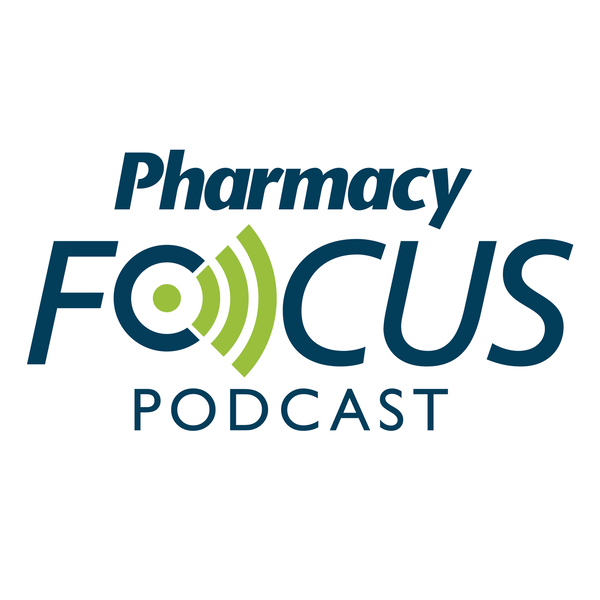News
Article
Report: 2024 Projected to Be A Big Year for Biosimilars in the Retina Space
Author(s):
Cardinal Health released its 2024 biosimilars report, including research and in-depth analyses on legislative development, payer landscapes, and new treatments in the pipeline.
lexiconimages - stock.adobe.com

Cardinal Health released its 2024 Biosimilars Report: Insights On a Pivotal Year of Evolution and Expansion, with analyses covering the economic, competitive, legislative, and societal developments within the biosimilar industry. The report includes legislative developments and new treatment as well as perspectives of retinal specialists as 2024 is expected to be a critical year for the retinal biosimilar space.1
“One of the key things that I think was addressed multiple times throughout the 2024 Biosimilars Report, by multiple pharmacists and other clinicians, was the importance of biosimilar savings in the overall sustainability of the US health care system,” Fran Gregory, PharmD, MBA, vice president of Emerging Therapies at Cardinal Health, said in an interview with Pharmacy Times. “In fact, we expect over $181 billion in savings through 2027, as the report notes, so it's really important for all of us to optimize that savings, opportunity, and play our part in in continuing to support biosimilar development and uptake.”
In the interview, Gregory added that another key idea brought up was about trusting the FDA approval processes establishing the efficacy and safety of biosimilars. Feedback in the report reflected support about the proven data as part of the approval process.
According to the report, as of 2023 the FDA approved 46 biosimilars, with 2023 bringing the highly awaited biosimilars for adalimumab (Humira; AbbVie). However, interchangeability is still a hot topic of conversation, with the FDA requiring an interchangeability designation in order for pharmacists to substitute biosimilars without consulting a prescriber. However, this is not needed at the prescriber level.2
This has resulted in confusion among health care professionals about what is considered interchangeable, according to a Pharmacy Times article. The common term “interchangeable” indicates that 2 products can be exchanged with no change in clinical results.3
The authors stated, “This is already true of biosimilars absent the FDA’s formal ‘interchangeability’ designation, and indeed FDA has said that all biosimilars are already interchangeable for the purposes of physicians’ prescribing.”3
“I'll start with a concept that I like to make sure is extremely clear…the interchangeability designation only applies in the [United States] to the FDA approval process. It is a regulatory designation. It is not a clinical designation,” Gregory said in the interview.
In the report, the authors indicate that for a biosimilar to have the interchangeability designation, additional switching studies are required, which can be costly. They also touched on how members of Congress are interested in studying and possibly expanding the designation process due to the additional requirements.2
As for highlighted biosimilars, adalimumab was at the forefront of the report. According to the report, biosimilars for adalimumab are the most significant pharmacy benefit launch to date, which the authors said could help pharmacy benefit managers leverage competition and drive down costs while increasing access for patients. Although this is a huge step for biosimilars and the multiple conditions that adalimumab cover, 3 indications are still missing due to orphan drug designation, which includes designations for the treatment of moderate to severe hidradenitis suppurative for Hurley stage 2 and Hurley stage 3 disease, according to the FDA. Adalimumab also received orphan drug designation for the same indication for individuals 12 years and older. Orphan drug designation grants 7-year market exclusivity to a drug.2
In the report, the authors stated that less than 5% of drug utilization is for this indication, and there is an anticipated impact when the exclusivity is up, but it’s expected to be small.2
Furthermore, the report highlights the retina space and included results from a survey that covered familiarity and comfort with biosimilars, potential cost savings and reimbursement practices, educational programs, and the pipeline of biosimilars in late-stage development.2
“Our research was really focused on the area of retina specialists, with a lot of buzz and a lot of opportunity for cost savings in the retina space with Eylea, Avastin, and Lucentis biosimilars. We've really focused a lot of research on that area to gain insight on a new therapeutic area that doesn't have as much experience as oncology providers do and see kind of into their world and what they are considering as far as biosimilar opportunities and challenges,” Gregory said in the interview.
The investigators found that 61% of retina specialists believe that biosimilars are improving patient care and 75% believe that they are improving health care system sustainability. Nearly 80% are either extremely or very familiar with biosimilars, but approximately 60% have prescribed biosimilars for retinal indications, including Lucentis (Genentech) biosimilars ranibizumab-nuna (Byooviz; Biogen) and ranibizumab-egrn (Cimerli; Coherus Bioscience), as well as any biosimilar to Avastin (Genentech). The majority also indicated that the most important decision-making factor when considering a biosimilar is clinical data, followed by real-world data and payer coverage, according to the report.2
“This year, we added some payer dynamics and some payer information, which I think we get many questions on, and it's always something that is interesting to monitor over time. I think the dynamics over time have certainly changed for the better,” Gregory said in the interview.
According to the report, there was a relatively large uptake in biosimilar usage for adalimumab biosimilars after their launch. Pharmacy updates have also seen rapid growth with other biosimilar quickly after release, with a trend for even quicker adoption when medical benefits come into play without the pharmacy benefit space.2
As for the pipeline, major developments have and will continue to come, including 3 approvals already in March 2024. These include tocilizumab-aazg (Tyenne; Fresenius Kabi), a biosimilar to tocilizumab (Actemra; Genentech); and denosumab-bbdz (Wyost; Sandoz) and denosumab-bbdz (Jubbonti; Sandoz), which are the first FDA-approved biosimilars to denosumab (Xgeva and Prolia; Amgen) for all indications of the reference product.4,5 According to the report, there are at least 10 additional molecules that will face competition from biosimilars within the next 4 years, with a projected savings of approximately $180 billion.2
Cost savings and accessibility were also highlights in the report. Biosimilars play a significant role in financial toxicities by potentially reducing out-of-pocket costs for patients, with affordability being a critical barrier for those who need these drugs. Gregory addressed this in the interview, staying it’s not uncommon for patients to choose between medication and other necessities. She also highlighted that pharmacists are leading the way to biosimilar education and have a unique opportunity to showcase their leadership abilities to maintain a sustainable health care system.
References
Cardinal Health annual research report examines milestone year in biosimilars. News release. Cardinal Health. February 29, 2024. Accessed March 7, 2024. https://www.prnewswire.com/news-releases/cardinal-health-annual-research-report-examines-milestone-year-in-biosimilars-302075391.html?tc=eml_cleartime
Cardinal Health. 2024 Biosimilars Report: Insights on a pivotal year of evolution and expansion. February 29, 2024. Accessed March 7, 2024. https://www.cardinalhealth.com/content/dam/corp/web/documents/Report/cardinal-health-2024-Biosimilars-Report.pdf
Park J, Woollett G. Confusion Persists Around the Interchangeability Designation for Biosimilars. Pharmacy Times. November 17, 2023. Accessed March 7, 2024. https://www.pharmacytimes.com/view/confusion-persists-around-the-interchangeability-designation-for-biosimilars
Gallagher A. FDA Approves Tocilizumab-aazg as Biosimilar to Actemra for Multiple Indications. Pharmacy Times. March 7, 2024. Accessed March 7, 2024. https://www.pharmacytimes.com/view/fda-approves-tocilizumab-aazg-as-biosimilar-to-actemra-for-multiple-indications
Gallagher A. FDA Approves Two Denosumab Biosimilars for All Indications of Reference Products. Pharmacy Times. March 5, 2024. Accessed March 7, 2024. https://www.pharmacytimes.com/view/fda-approves-2-denosumab-biosimilars-for-all-indications-of-reference-products
Newsletter
Stay informed on drug updates, treatment guidelines, and pharmacy practice trends—subscribe to Pharmacy Times for weekly clinical insights.






